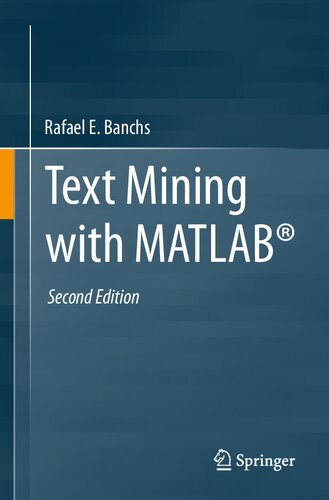

Most ebook files are in PDF format, so you can easily read them using various software such as Foxit Reader or directly on the Google Chrome browser.
Some ebook files are released by publishers in other formats such as .awz, .mobi, .epub, .fb2, etc. You may need to install specific software to read these formats on mobile/PC, such as Calibre.
Please read the tutorial at this link: https://ebookbell.com/faq
We offer FREE conversion to the popular formats you request; however, this may take some time. Therefore, right after payment, please email us, and we will try to provide the service as quickly as possible.
For some exceptional file formats or broken links (if any), please refrain from opening any disputes. Instead, email us first, and we will try to assist within a maximum of 6 hours.
EbookBell Team

0.0
0 reviewsText Mining with MATLAB® provides a comprehensive introduction to text mining using MATLAB. It is designed to help text mining practitioners, as well as those with little-to-no experience with text mining in general, familiarize themselves with MATLAB and its complex applications.
The book is structured in three main parts: The first part, Fundamentals, introduces basic procedures and methods for manipulating and operating with text within the MATLABprogramming environment. The second part of the book, Mathematical Models, is devoted to motivating, introducing, and explaining the two main paradigms of mathematical models most commonly used for representing text data: the statistical and the geometrical approach. Eventually, the third part of the book, Techniques and Applications, addresses general problems in text mining and natural language processing applications such as document categorization, document search, content analysis, summarization, question answering, and conversational systems. This second edition includes updates in line with the recently released “Text Analytics Toolbox” within the MATLAB product and introduces three new chapters and six new sections in existing ones.
All descriptions presented are supported with practical examples that are fully reproducible. Further reading, as well as additional exercises and projects, are proposed at the end of each chapter for those readers interested in conducting further experimentation.